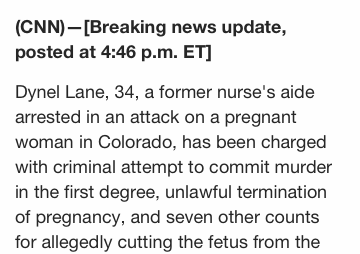By S. MOLLY DOMINICK
I was browsing Internet news sites today when a giant banner with bright red letters appeared at the top of the CNN homepage declaring there was breaking news!
“Well,” I thought. “Seems important — better click on it!”
And the link brought me to the following news story about a former nurse’s aide who attempted first-degree murder of another woman by cutting a fetus from her womb.
 “Wow, how absolutely disturbing and horrific!”
“Wow, how absolutely disturbing and horrific!”
Yes, this news is certainly those things. But, is it “breaking?”
As I have previously understood, “breaking” means more than shocking. It means that the public needs to know this information now — or as quickly as possible—trumping the necessity of all other information in this moment.
And what makes this information so important to the public at large? It must have a substantial impact on people’s lives.
Although a ghastly and interesting find, this story is an anomaly and only affects a small circle of people. This story can be big news and very talked about news, sure—but showcasing it in huge font as breaking news feels like an attempt to merely gain clicks.
Not only are news sites including more and more “clickbait” in their headlines these days, but in this specific instance, they seem to be taking advantage of the horrific nature of this crime to do the clickbaiting.
Although not even remotely comparable, this act is ghastly and horrific in its own right.

